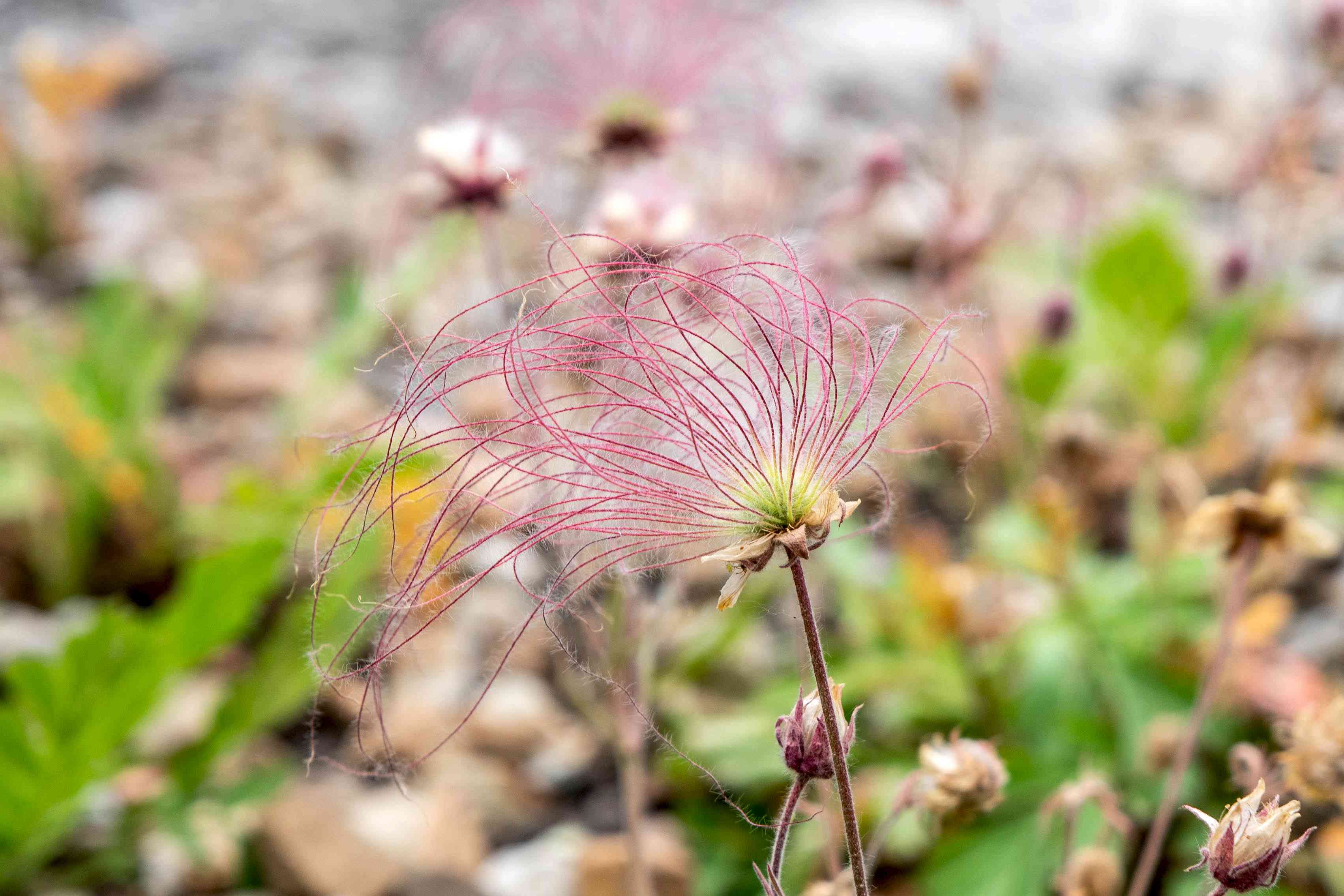
Prairie Smoke, also known as Geum triflorum, is a unique plant species that can be found in the prairies and grasslands of North America. This perennial herb captivates both botany enthusiasts and nature lovers alike with its stunning appearance and interesting characteristics. From its delicate pink flowers to its intriguing seed heads, prairie smoke stands out among the native flora.
In this article, we will explore nine fascinating facts about prairie smoke, shedding light on its biology, ecology, and cultural significance. Whether you’re a gardener looking to add a touch of native beauty to your landscape or simply curious about the wonders of nature, join us on this journey through the enchanting world of prairie smoke. Let’s dive in and discover what makes this plant so special!
Key Takeaways:
- Prairie smoke, also known as Geum triflorum, is a resilient wildflower with bell-shaped blossoms that bloom early in the spring, attracting pollinators and providing essential habitat for wildlife.
- Its unique appearance, ability to thrive in challenging environments, and historical use by Native Americans make prairie smoke a captivating and ecologically significant wildflower in North America.
Prairie Smoke’s Unique Appearance
One look at the prairie smoke and you’ll surely be captivated by its unique appearance. The flower features drooping, bell-shaped blossoms that are a deep reddish-pink color. The sepals of the flower curl outward, resembling smoke rising from a fire, hence the name prairie smoke.
An Early Bloomer
Prairie smoke is one of the earliest wildflowers to bloom in the spring. In fact, it can bloom as early as April, adding a pop of color to the otherwise barren prairies. Its vibrant blossoms are a welcome sight after the long winter months.
Curious Seed Heads
Once the flowers of the prairie smoke have faded, the plant produces unique seed heads that are equally as captivating. The seed heads resemble feathery plumes and are often used in dried flower arrangements. The sepals that once resembled smoke now transform into striking, seed-bearing structures.
Thrives in Challenging Environments
Prairie smoke is well adapted to survive in the harsh conditions of the prairie ecosystem. It can withstand drought, strong winds, and even wildfires. Its deep taproot enables it to access water deep in the ground, ensuring its survival in challenging environments.
A Symbol of Resilience
Due to its ability to thrive in tough conditions, prairie smoke has become a symbol of resilience and strength. It serves as a reminder that even in the face of adversity, beauty can prevail.
Attracts Pollinators
The intricate blossoms of the prairie smoke attract a variety of pollinators, including bees and butterflies. These insects play a crucial role in the plant’s reproduction by transferring pollen from one flower to another.
Used by Native Americans
The prairie smoke has a long history of use by Native American tribes. Various parts of the plant, including the roots and leaves, were used for medicinal purposes such as treating coughs and fevers. It was also used in ceremonial rituals.
A Natural Ground Cover
With its low-growing habit and spreading nature, prairie smoke acts as a natural ground cover, helping to control soil erosion on the prairies. Its presence plays a vital role in maintaining the delicate balance of the ecosystem.
Important for Wildlife
The prairie smoke provides essential habitat and food for various wildlife species. Small mammals, birds, and insects rely on this plant for shelter and nourishment, making it an integral part of the prairie ecosystem.
These nine fascinating facts about prairie smoke shed light on the beauty, resilience, and ecological significance of this remarkable wildflower. Whether you encounter it during a nature walk or admire it in dried flower arrangements, the prairie smoke continues to captivate both nature enthusiasts and admirers of floral beauty.
Conclusion
The prairie smoke plant, also known as Geum triflorum, is a fascinating and unique plant that can be found in the prairies of North America. Its delicate pink flowers and feathery seedheads make it a standout among other wildflowers. But there’s more to this plant than meets the eye. From its medicinal uses to its ecological importance, prairie smoke is truly a remarkable species.Not only does prairie smoke add beauty to the prairie landscape, but it also serves as an important food source and habitat for various pollinators and wildlife. Its deep root system helps prevent soil erosion and contributes to the overall health of the ecosystem. Additionally, this plant has a long history of being used in traditional medicine, particularly by Native American tribes.Prairie smoke is just one example of the incredible diversity of plant life on our planet. As we continue to explore and learn about these fascinating species, we deepen our understanding of the interconnectedness of all living things. So, the next time you come across prairie smoke, take a moment to appreciate its beauty and significance in the natural world.
FAQs
1. Where can I find prairie smoke?
Prairie smoke can be found primarily in the prairie regions of North America, including parts of the United States and Canada. It thrives in dry prairie habitats and is often seen in grasslands and meadows.
2. What does prairie smoke look like?
Prairie smoke has unique reddish-pink flowers that resemble wisps of smoke when they first bloom. As the flowers fade, they transform into feathery, silver seedheads that resemble plumes of smoke, giving the plant its name.
3. Is prairie smoke a rare plant?
While prairie smoke may not be as well-known as some other wildflowers, it is not considered a rare plant. It is a hardy species that is well-adapted to the prairie environment and can be found in suitable habitats.
4. Are there any medicinal uses for prairie smoke?
Yes, prairie smoke has been used in traditional medicine for centuries. Native American tribes used it to treat various ailments, including sore throats, coughs, and gastrointestinal issues.
5. Can prairie smoke be grown in gardens?
Yes, prairie smoke can be grown in gardens, particularly in prairie-style or native plant gardens. It adds unique beauty and ecological value to landscapes and attracts pollinators and wildlife.
6. How do I care for prairie smoke plants in my garden?
Prairie smoke plants prefer well-drained soil and full sun. They are adapted to drought conditions, so they do not require frequent watering. Mulching around the plants can help conserve moisture and control weeds.
7. Is prairie smoke a good plant for pollinators?
Yes, prairie smoke is an excellent plant for pollinators. Its flowers attract bees, butterflies, and other beneficial insects, which help with pollination and contribute to a healthy ecosystem.
8. Does prairie smoke have any special characteristics?
One of the unique characteristics of prairie smoke is its seedheads. They have a fascinating structure that resembles an upside-down pineapple, and they are a distinctive feature of this plant.
9. Are there any other plants similar to prairie smoke?
There are several other plant species that are similar to prairie smoke in terms of appearance and habitat. Some examples include prairie coneflower, pasqueflower, and bee balm. These plants often complement each other in prairie ecosystems.
Prairie Smoke's captivating beauty inspires curiosity about other fascinating plants. Delve into the world of native plants like Compass Plant, with its unique leaf orientation. Wildflowers offer a kaleidoscope of colors and shapes, each with its own story to tell. Perennial plants, such as the enchanting Hepatica, return year after year, revealing astonishing adaptations and resilience. Embark on a journey of discovery and uncover the marvels of the plant kingdom, from the prairies to the woodlands.
Was this page helpful?
Our commitment to delivering trustworthy and engaging content is at the heart of what we do. Each fact on our site is contributed by real users like you, bringing a wealth of diverse insights and information. To ensure the highest standards of accuracy and reliability, our dedicated editors meticulously review each submission. This process guarantees that the facts we share are not only fascinating but also credible. Trust in our commitment to quality and authenticity as you explore and learn with us.


